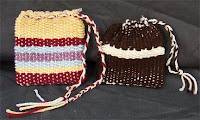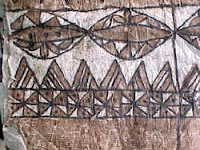Building off of the previous post, here is a list of the
Principles of Design: Rules for using the elements of art to produce certain effects based on how viewers react to visual images. These principles apply directly to Visual Art, but variations of these principles can be applied to all the arts as they are viewer based. Like a scientist in a lab you must learn to combine the elements in different ways to make exciting new discoveries!
Rhythm
a. Repeats elements to create the illusion of movement.
b. Visual rhythm is perceived through the eyes.
c. Created by repeating positive spaces separated by negative spaces.
d. Five kinds of rhythm - random, regular, alternating, flowing, and progressive.
Movement
a. Deals with creating the illusion of action or physical change in position.
b. Used in art to control the way a viewer looks at a work of art.
Balance
a. Deals with arranging visual elements in a work of art equally.
b. Visual balance results in the viewer feeling that the elements have been arranged in a satisfactory way.
c. Types of balance - formal (symmetrical), and informal (asymmetrical).
Proportion
a. Concerned with the size relationships of one part to the whole and one part to another.
Variety, Emphasis, and Unity
These principles are used in design to create interest and appeal and to allow the artist to further express ideas or feelings in their art work.
Emphasis - stresses one element or area in a work of art to make it attract viewer's first attention.
Dominant - element first noticed
Subordinate - elements noticed later
Techniques used for creating emphasis on a specific element(s): contrasting colors, bright colors vs. low intensity colors, difference in size and shape.
Focal point - area that first grab your attention.
Techniques for creating focal points in a work of art: contrasting colors, bright colors vs. low intensity colors, difference in size and shape, isolation, location, convergence, uniqueness.
Variety - uses difference or contrast to balance and unify objects.
Examples of contrasting characteristics - wide/thin, straight/curved, freeform/geometric, rough/smooth, dark/light, bright/dull
Unity - allows viewer to see the combination of elements, principles and media as a whole.
Techniques used to create unity in a design:
harmony - objects relate to or agree with other objects (i.e. repeated elements, similar color or shape),
simplicity,
repetition,
proximity,
continuation - objects are arranged so that a line or edge of one shape continues into a line or edge of another shape.











